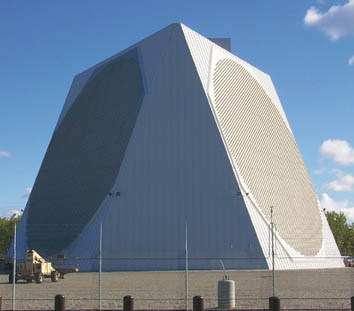|
AMES Type 6
AMES Type 6, also known as the Light Warning Set or L/W, was a portable early warning radar developed by the Air Ministry Experimental Station (AMES) for use by the Royal Air Force (RAF) in the field. Units in British Army service were officially known as Radar, Anti-Aircraft, Number 4, or AA. No. 4 for short, although this name was rarely used in practice. The system was also built in Canada for use by the US Army, who referred to them as SCR-602-A. The antenna consisted of four Yagi antenna, Yagi antennas mounted on a central pole. Supports running from the pole to the corners of the antennas give it a distinctive hourglass-like shape. The pole sat in a bearing to provide rotation around the vertical axis, allowing it to scan the horizon. The Type 6 was based on the same 1.5 m wavelength electronics as the ASV Mark II radar, ASV Mark II. As this wavelength became increasingly congested, the Type 6 Mark III moved to 212 MHz and introduced a new truck mounting to improve ... [...More Info...] [...Related Items...] OR: [Wikipedia] [Google] [Baidu] |
Early Warning Radar
An early-warning radar is any radar system used primarily for the long-range detection of its targets, i.e., allowing defences to be alerted as ''early'' as possible before the intruder reaches its target, giving the air defences the maximum time in which to operate. This contrasts with systems used primarily for tracking or gun laying, which tend to offer shorter ranges but offer much higher accuracy. EW radars tend to share a number of design features that improve their performance in the role. For instance, EW radar typically operates at lower frequencies, and thus longer wavelengths, than other types. This greatly reduces their interaction with rain and snow in the air, and therefore improves their performance in the long-range role where their coverage area will often include precipitation. This also has the side-effect of lowering their optical resolution, but this is not important in this role. Likewise, EW radars often use much lower pulse repetition frequency to maximiz ... [...More Info...] [...Related Items...] OR: [Wikipedia] [Google] [Baidu] |

